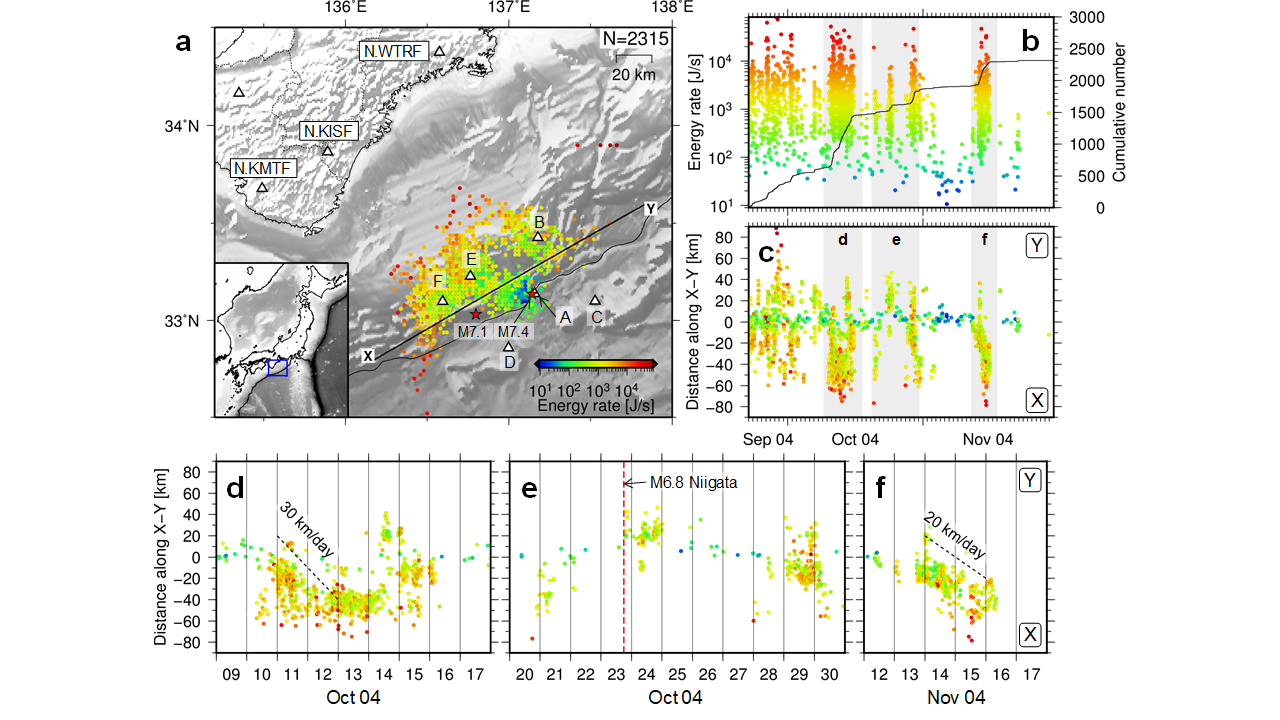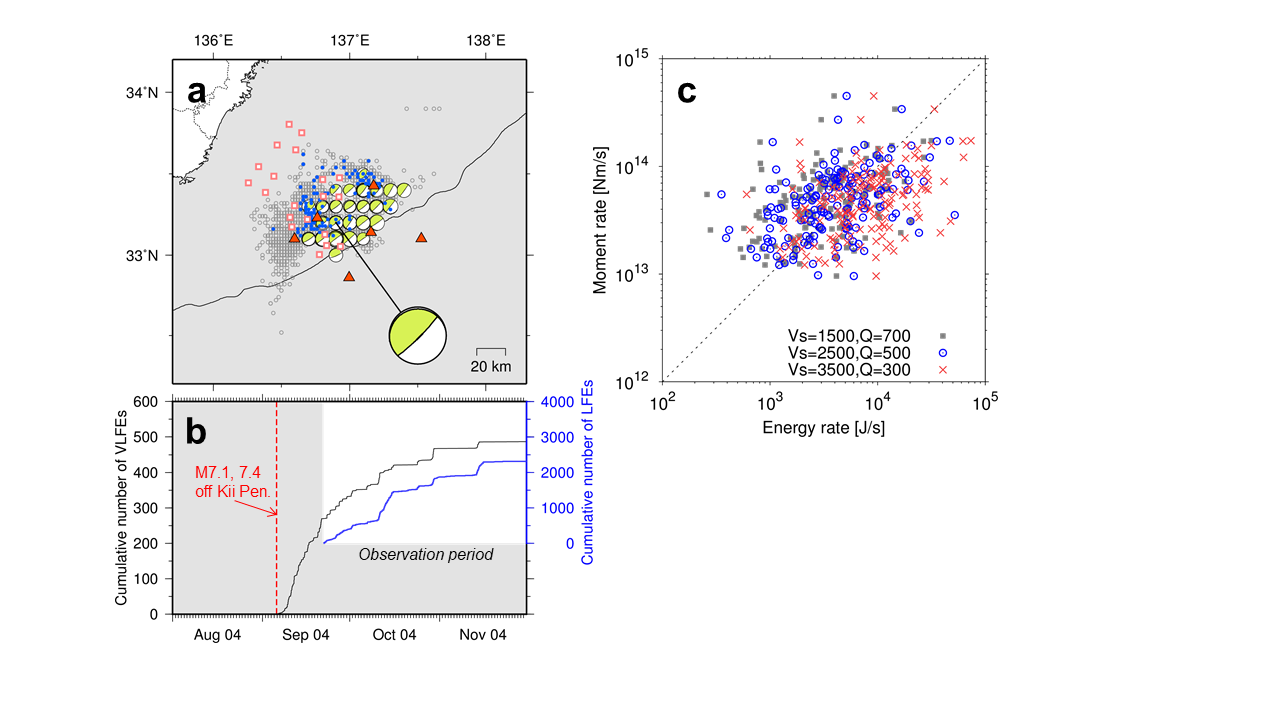2004年紀伊半島南東沖の地震後、気象研ではOBSによる余震観測を実施した。その余震の震源決定を手伝ったとき、特定の時間帯に紡錘形の変な波形が多発していることに気が付いた。さらに、F-net広帯域地震計の紀和観測点のスペクトル画像で低周波のみに信号がある時間帯と、先ほどの紡錘形の波形の多発時間帯が一致していることに気が付いた。これは浅部の超低周波地震を直近で観測したものではないかと思ったが、私には地震波形の解析技術がない。歴代のOBS担当者や周囲の人にこの話を持ち掛けたが、なかなか解析してくれる人がいなかった。2018年春に溜渕さんに話したところ興味を持ってくれ、解析が進み論文となったことはうれしい。
要旨
The characteristics of shallow low‐frequency earthquakes (LFEs) are related to stress changes on the shallow plate boundary, which are important for understanding the megathrust earthquake cycle. The 5 September 2004 off the Kii Peninsula earthquakes (MJMA = 7.1, 7.4) occurred near the Nankai trough subduction zone, off southwest Japan. Ocean bottom seismometer observations from 22 September to 30 November 2004 detected many shallow LFEs among the ordinary aftershocks. During the observation period, the frequency of shallow LFEs steadily decayed with the exception of episodic activities, which were very sensitive to stress changes caused by tides and the 23 October 2004 Niigata earthquake (MJMA = 6.8). We also confirmed correlations between shallow LFEs and shallow very low frequency earthquakes, which suggest that these slow events represent the same slip phenomenon. These findings will contribute to clarifying the impact of LFEs on megathrust earthquakes.

図 浅部低周波地震の震央分布。振幅からAmplitude Source Location (ASL)を用いて決定したもの。

図 浅部低周波地震と浅部超低周波地震の比較。
| 
